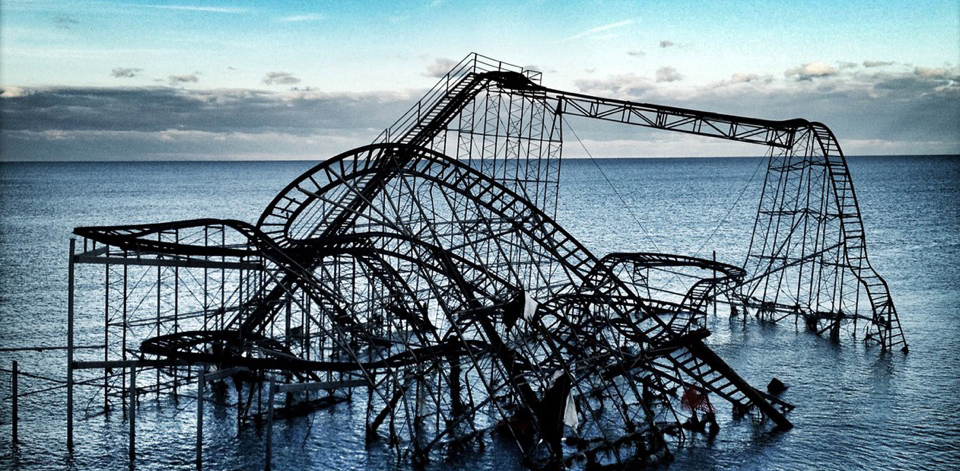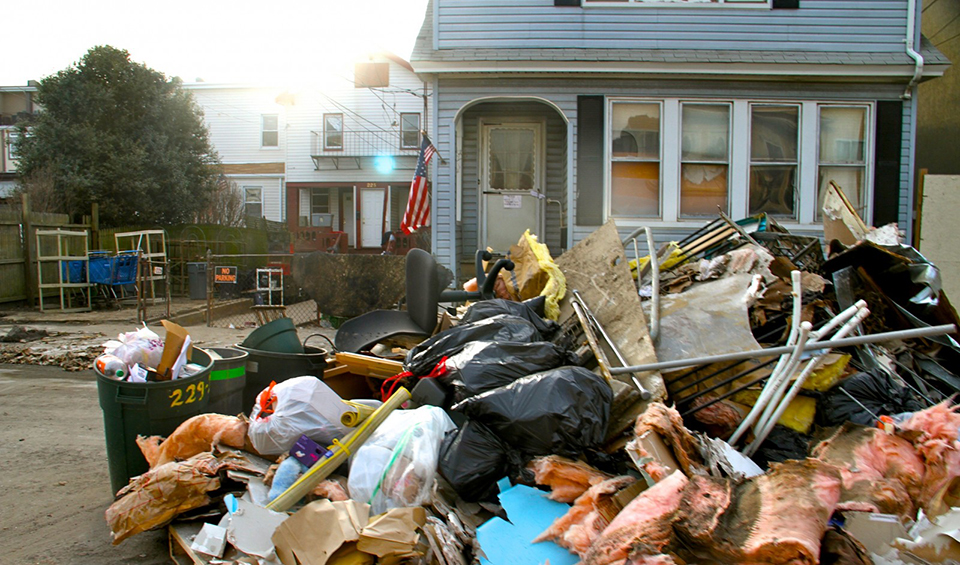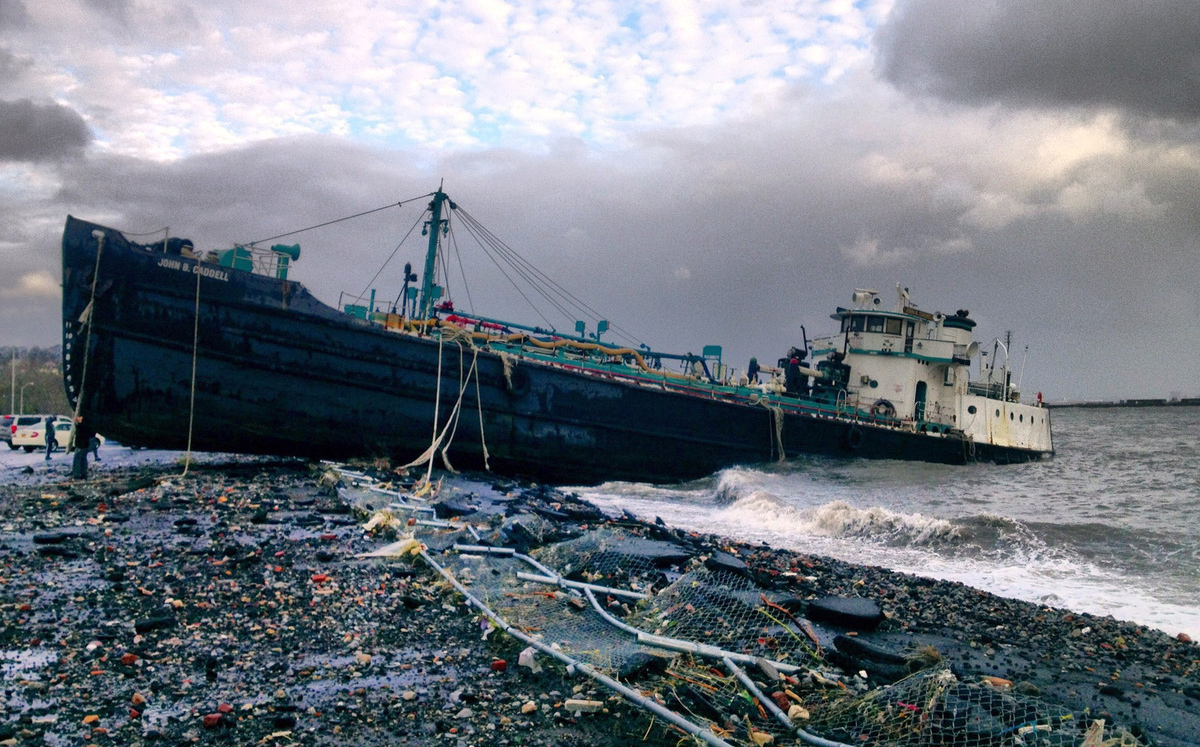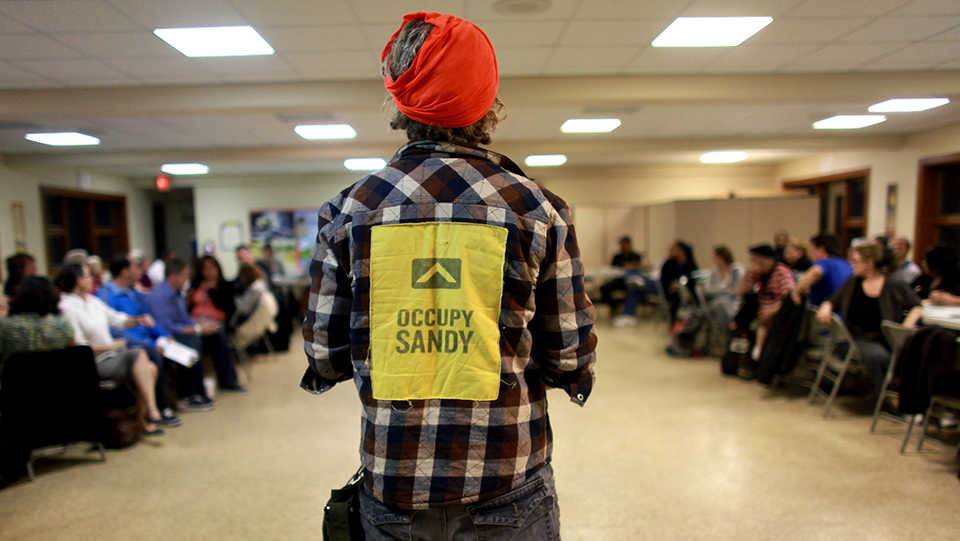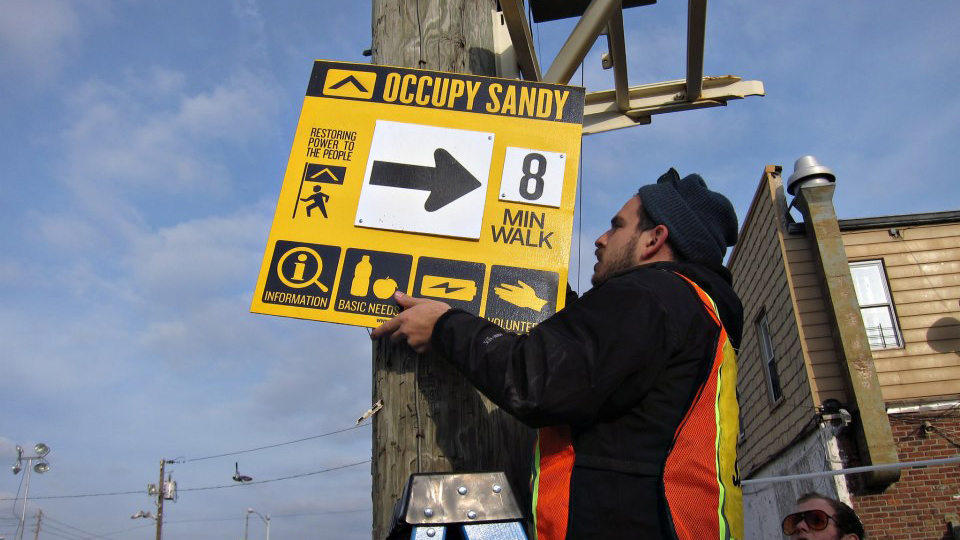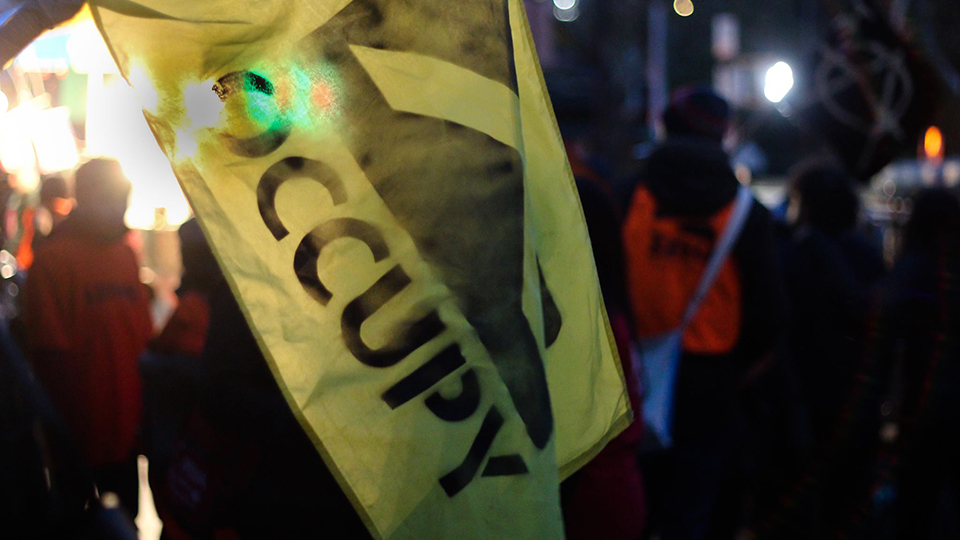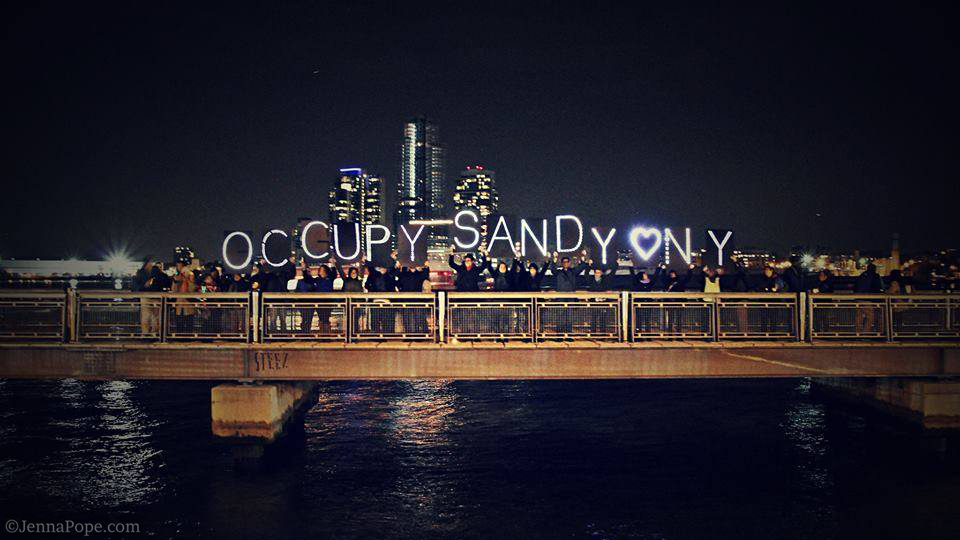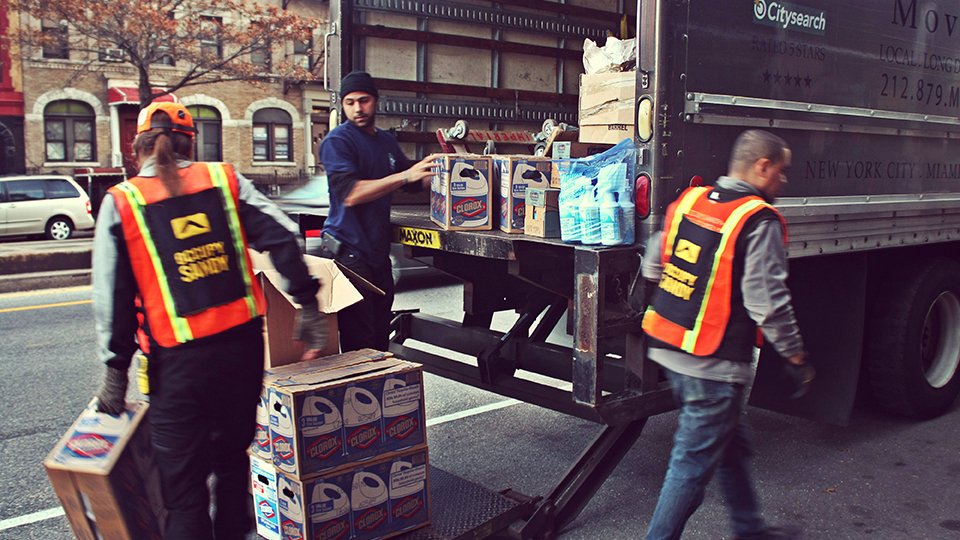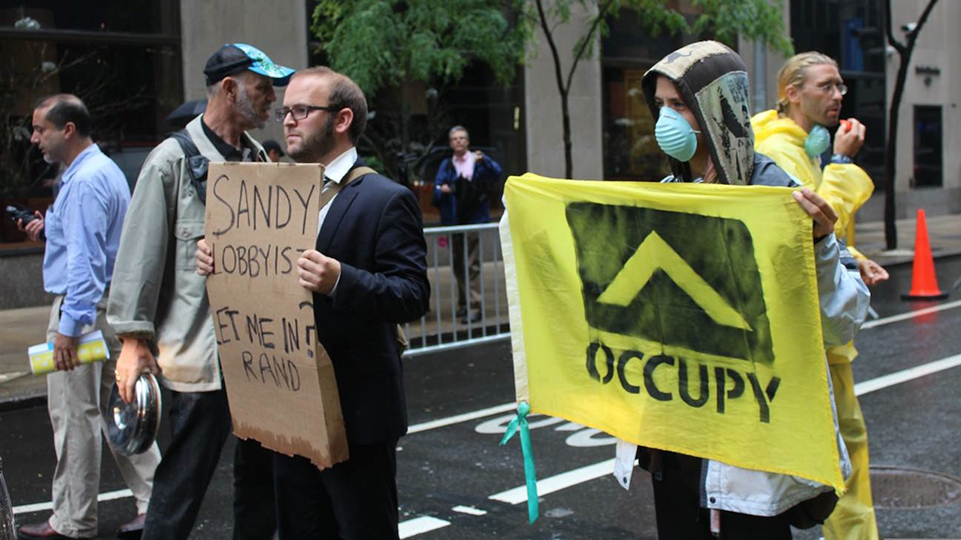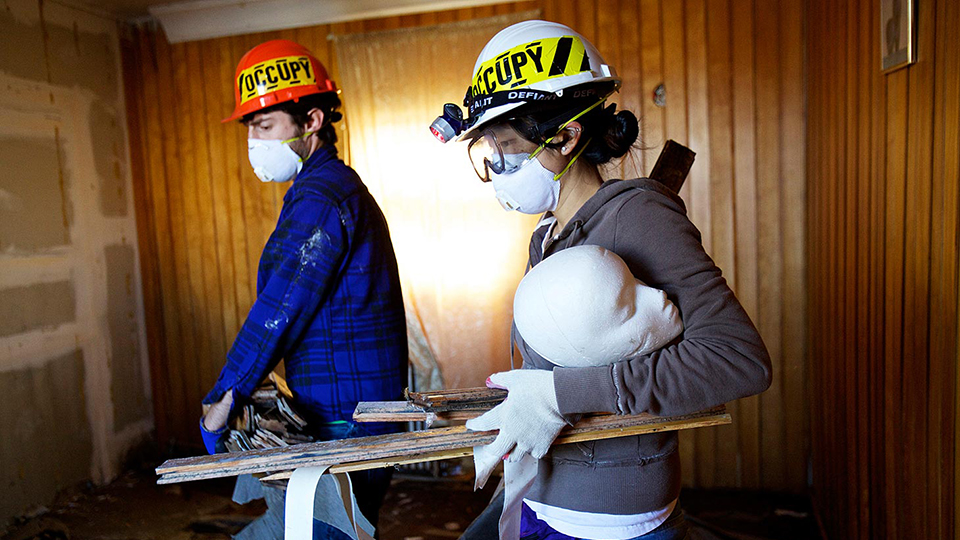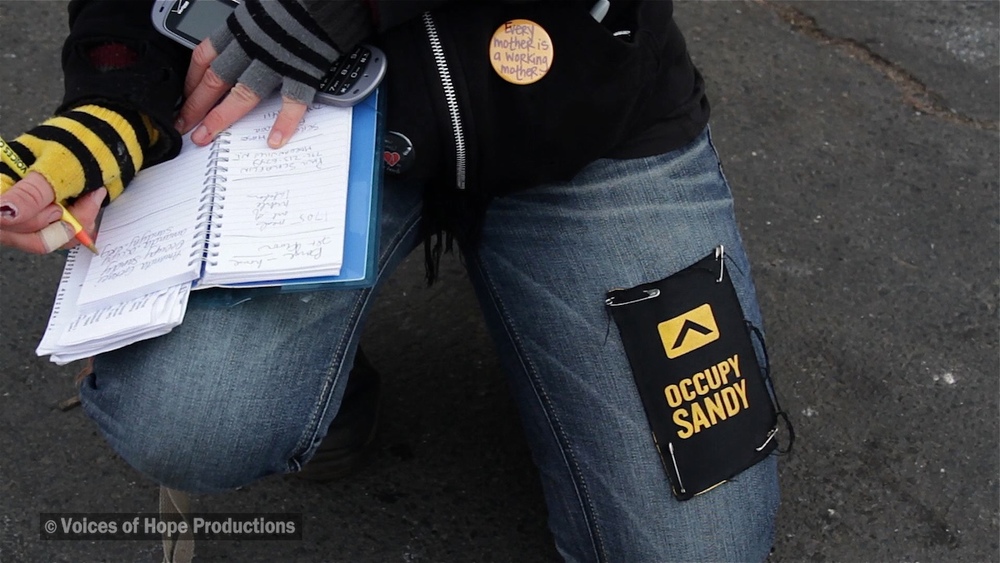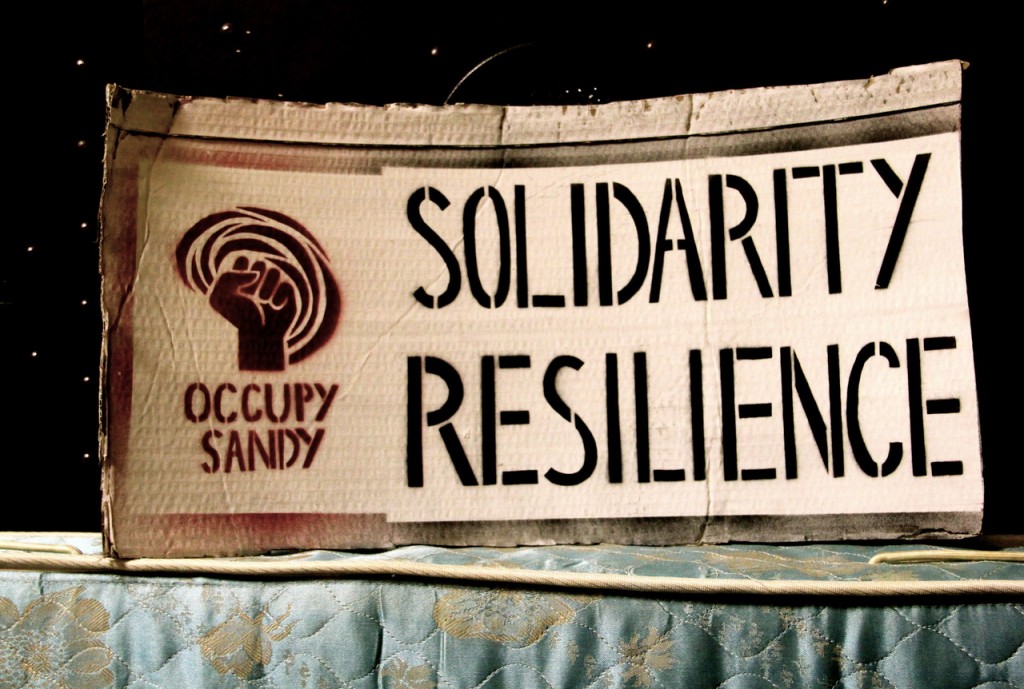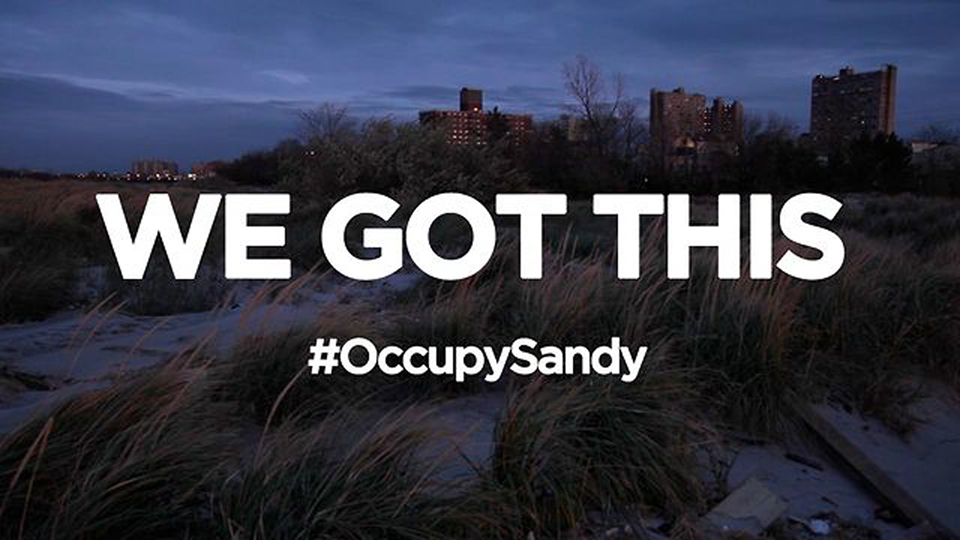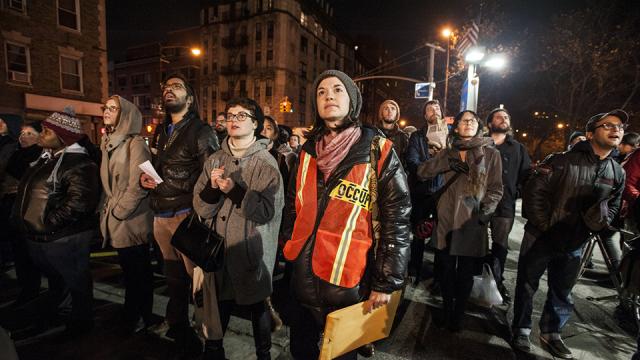
In the eighteen months since Superstorm Sandy hit the East Coast and forced the entire region to rethink our way of life, people on the front lines of the recovery effort are still working tirelessly to rebuild and restore hope to the community.
Whether it be developing youth programming, worker cooperatives, and political education and organizing for responsible development in the Rockaways; coordinating rebuilding crews and sharing stories in New Jersey; or building coordination systems for community-led relief, recovery and resilience efforts – our community coalitions are growing strong and there is still so much work to be done.
This week, a dedicated group came together in Staten Island to mark the 18-month anniversary and to discuss progress and future plans. The group gathered at 706 Quincy Avenue – an Ocean Breeze street virtually destroyed by the storm – in front of the home which was rebuilt by members of the Long Term Recovery Group’s rebuild committee.
Over the past few months, dozens of volunteers have breathed life into the home – installing windows, doors, a floor, a new roof, sheetrock and insulation in what had been a shell for more than a year. The work on this home is part of a renewed push to rebuild homes and get storm survivors’ lives back to normal.
The 2014 goal of the Staten Island Long Term Recovery Organization is to rebuild some 125 homes in the disaster zone. This week, organizational leaders and residents whose lives were upended by Sandy shared their perspectives and talked about their successes, challenges and their vision for the future.
Meanwhile, as reported this week by Peter Moskowitz for Al Jazeera America, FEMA aid is ending for thousands of Sandy victims in New York and New Jersey who still await the federal money that was promised to them:
A year and a half after Hurricane Sandy hit the New York metropolitan area, destroying tens of thousands of homes, Barbara Vahey is stuck between a rock and a hard place. More specifically, she’s stuck in a funding gap between the Federal Emergency Management Agency and the bureaucratic black hole of local housing recovery programs.
Vahey, 52, had her house in Island Park, on Long Island, destroyed by the storm. She still can’t afford to bring it up to new flood standards that would enable her and her husband to either move back in or sell up.
After brief stints living with different family members, Vahey has been in a rental apartment on the other side of town since July with the help of funding from FEMA. But as of May 1, that assistance will run out and Vahey has nowhere to go.
“I have a $100,000 mortgage with Chase on the house, plus I’m paying taxes and insurance, so I can’t walk away,” she said. “I’ve been waiting for [state funding] to rebuild since it first started last April … now I’m in limbo.”
Vahey isn’t alone. She’s one of 1,300 New York and New Jersey families who until May 1 had been relying on FEMA rental assistance to get them through the last 18 months as they rebuilt their houses or found alternative living arrangements.
In theory, those 18 months should have been enough — FEMA’s programs are designed to hold people over until state- and city-level programs kick in. But housing advocates say that New York’s and New Jersey’s programs have been poorly managed and mired in red tape, leaving people like Vahey without enough money to rebuild their own houses or find a new one.
“The problem is the [local] rental programs aren’t really up and running yet,” said Kevin Walsh, the director of the Fair Share Housing Center in New Jersey, which has helped Sandy victims with legal issues since the storm. “FEMA’s assumption is that the local systems are in place. While that should be a safe assumption, in this case it’s the wrong assumption.”
A total of 137,928 households received funding from FEMA after the storm, according to FEMA figures. The vast majority of those were in New York and New Jersey.
As of April, New York State still had 589 households on FEMA’s rental assistance rolls, down from 90,944 in the months immediately following the storm. New Jersey still had 711, down from a high of 44,592.
But those numbers represent only a fraction of the actual unmet need in the two states, according to Walsh and other housing advocates. Walsh said that in addition to those who were on FEMA aid, there are thousands of others who are currently receiving no federal aid and have been waiting for state aid for months.
“The main issue we see is that, had the local programs worked, everything would be fine now,” said Fazeela Siddiqui, an attorney at the Legal Aid Society’s Queens office. “FEMA’s done, but now everyone needs more time.”
The problems with the programs run by New York state, New York City and New Jersey are myriad, advocates say. They range from lost paperwork to confusing instructions on applications for aid, from language barriers between applicants and administrators to slow processing times.
New York City’s Sandy recovery program, Build It Back, is now being audited by the state comptroller, Scott Stringer.
“It disturbs me greatly there are 20,000 people on a waiting list and six homes have been rebuilt,” Stringer said recently. “This has gone on way too long.” And after months of criticism over New Jersey’s program, state lawmakers promised on Tuesday that aid would come quicker.
But for people like Vahey, quicker isn’t quick enough.
Vahey’s current rent is $2,200. She’s searched for something cheaper, but there’s nothing available that accepts dogs, and Vahey has been her son’s de facto dog sitter while he completes a tour of duty as a Marine. She’ll now have to pay that rent without the $1,500 a month from FEMA. She says that’s nearly impossible on her public school administrator’s salary and the money her husband earns from driving a bread truck 15 hours a day.
But even though her rent is too high, Vahey can’t move back home.
She said it’d cost nearly $100,000 to raise her small house high enough to meet the state’s new requirements. Without raising it, she can’t sell it — meaning she’s stuck paying a $100,000 mortgage, property tax and flood insurance for a house she can’t live in, in addition to the $2,200 a month she’s paying in rent.
She’s still waiting for the state to process her year-old application for money to help raise her home, or to buy it out so she can pay off the mortgage and move.
Until then, she said, she’s stuck waiting, and quickly racking up debt.
“There are thousands of us. We’re all struggling to survive because we’re not getting the money dedicated to Sandy,” she said. “I don’t know what they’re waiting for. The stress is unbelievable ... I don’t know how much longer I’ll be able to do this.”
3 WAYS TO SHOW YOUR SUPPORT
- Log in to post comments

